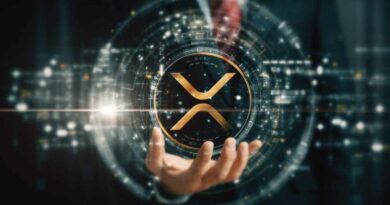A Comprehensive Comparison of Real World Asset (RWA) Tokenization and Security Token Offerings (STOs) | by 曲明 | The Capital | Feb, 2025

Recently, both the crypto asset industry and traditional finance have been abuzz with discussions about Real World Assets (RWAs) and their tokenization. Many believe that over the next decade, RWAs will emerge as the dominant asset class in the digital asset space, alongside crypto commodities like Bitcoin.
In this article, we will provide a comprehensive exploration of what RWAs are, how they are tokenized, and examine the intersection of this innovation with Security Token Offerings (STOs), focusing on the method of issuance.
The rapid advancement of blockchain technology has led to the emergence of two pivotal concepts in the digital securities space: Real World Asset (RWA) Tokenization and Security Token Offerings (STOs). These concepts are transforming traditional financial and investment systems by integrating blockchain into real-world asset management and investment processes. While both RWA tokenization and STOs utilize blockchain to improve transparency, efficiency, and liquidity, they differ in terms of scope, regulatory implications, and technical execution. This comparison aims to provide a detailed understanding of each model, analyzing their similarities, differences, and the key factors driving their growth.
Real World Asset (RWA) Tokenization
RWA tokenization involves the conversion of physical or non-physical assets into digital tokens on a blockchain. These tokens represent fractionalized ownership or rights to the underlying asset, such as real estate, commodities, intellectual property, or even fine art. By doing so, RWA tokenization enables easier access to traditionally illiquid assets and enhances the ability to trade or invest in these assets on a global scale.
Types of Tokenized Assets Include:
- Real Estate: Residential, commercial properties, or land.
- Commodities: Precious metals, oil, gas, agricultural products.
- Intellectual Property: Patents, trademarks, copyrights.
- Art and Collectibles: Paintings, sculptures, rare items.
- Debt Instruments: Loans, bonds, receivables.
Security Token Offerings (STOs)
STOs are a method of issuing tokenized securities that comply with existing financial regulations, such as securities laws, in various jurisdictions. Unlike traditional Initial Coin Offerings (ICOs), which often issue utility tokens with no underlying financial asset, STOs issue tokens that represent real securities — such as equity, debt, or profit-sharing agreements — backed by traditional financial assets.
Types of Assets Typically Offered in STOs Include:
- Equity: Shares or ownership interests in a company.
- Debt: Bonds or notes representing a company’s debt obligations.
- Profit-Sharing: Revenue-sharing agreements or dividend rights.
- Real Estate Securities: Tokenized shares of property ownership.
The regulatory landscape for both RWA tokenization and STOs is complex and varies significantly by jurisdiction. Both models involve compliance with securities regulations, but the specific legal requirements depend on whether the asset is considered a security or a commodity and the jurisdiction’s regulatory stance on digital assets.
RWA Tokenization Regulatory Framework
- U.S.: While RWA tokenization itself may not always be classified under securities law, the tokenization process can fall under the jurisdiction of the U.S. Securities and Exchange Commission (SEC) if the tokenized asset represents securities. For example, tokenizing equity in a real estate project would trigger SEC scrutiny.
- EU: In the EU, RWA tokenization is subject to regulations such as the Markets in Financial Instruments Directive (MiFID II), depending on the type of asset being tokenized. Certain types of tokens may be considered “e-money” or a “security,” triggering compliance with MiCA (Markets in Crypto-Assets).
- Asia: Countries like Singapore and Japan have clear frameworks around tokenization but may treat RWA tokenization differently based on whether the token is considered a security.
STO Regulatory Framework
- U.S.: STOs are primarily governed by the SEC, which ensures that tokenized securities comply with the Securities Act of 1933. Issuers must register their offering or seek exemptions (e.g., Regulation D or Regulation S).
- EU: STOs are subject to the Prospectus Regulation, MiFID II, and other relevant EU regulations. Companies offering STOs must ensure that they meet the EU’s regulatory requirements for issuing securities.
- Asia: Countries like Japan, South Korea, and Hong Kong have specific regulations regarding STOs. Japan, for example, requires STOs to comply with the Financial Instruments and Exchange Act (FIEA).
Key Regulatory Differences:
- RWA tokenization often falls into gray areas and can be treated as asset-backed tokens (rather than securities) unless the token represents a security.
- STOs are specifically designed to comply with securities laws, with stringent requirements for registration, disclosures, and investor protections.
RWA Tokenization Technology
- Tokens Used: RWA tokens are typically created using smart contracts on public blockchains like Ethereum (ERC-20, ERC-721 for NFTs) or Polkadot. These tokens represent ownership or rights in a real-world asset.
- Custody Solutions: Custody is often handled through multi-signature wallets or third-party custody services (e.g., BitGo, Fireblocks).
- Smart Contracts: Smart contracts are used to define the terms of ownership, transfer rights, and other functionalities of tokenized assets. The complexity depends on the asset being tokenized.
STO Technology
- Tokens Used: STO tokens are generally issued using the ERC-1400 standard, which is specifically designed for securities. This standard allows for features like compliance with KYC/AML regulations, transfer restrictions, and issuer control over token transfers.
- Custody Solutions: Custody for STOs is more robust, often requiring regulated custodians and compliance solutions to ensure that investors’ holdings comply with securities laws.
- Smart Contracts: STO smart contracts are more compliance-focused, incorporating features like transfer restrictions and investor accreditation checks.
Key Technological Differences:
- RWA tokenization focuses on representing tangible or intangible assets, while STOs focus on tokenizing securities subject to regulatory compliance.
- STO tokens are generally more restricted in terms of transferability, reflecting the regulatory burden associated with securities.
RWA Tokenization
- Benefits:
- Increased liquidity for traditionally illiquid assets.
- Fractional ownership allows for smaller investments in high-value assets.
- Transparency and immutability provided by blockchain.
- Drawbacks:
- Legal ambiguity in some jurisdictions regarding whether tokenized assets are classified as securities.
- Operational challenges in tokenizing physical assets (e.g., real estate, fine art).
- Requires strong asset management to ensure the underlying asset is properly secured.
STOs
- Benefits:
- Legal clarity as tokenized securities comply with existing regulations.
- Provides a more secure investment environment due to legal protections for investors.
- Greater access to institutional investors due to regulatory compliance.
- Drawbacks:
- Higher compliance costs and regulatory hurdles.
- Restricted transferability and higher costs due to the complexity of regulatory requirements.
Successful RWA Tokenization Projects
- RealT: A platform offering tokenized real estate investments, where investors can purchase fractionalized ownership of properties through blockchain-based tokens.
- Maecenas: A tokenization platform for art, allowing fractional ownership of high-value artworks, enhancing liquidity in the art market.
Successful STO Projects
- INX Token: The INX Token is a digital asset issued by INX Limited, a regulated exchange for both cryptocurrencies and security tokens. INX raised funds through an SEC-compliant Security Token Offering, marking one of the first fully regulated STOs in the U.S. The INX Token serves as a utility token on the INX exchange and offers investors access to a variety of blockchain-based assets, with the added security of regulatory compliance. The offering was conducted under Regulation A+ of the U.S. Securities Act, making it accessible to both accredited and non-accredited investors.
- BlackRock’s BUIDL Project: BlackRock’s BUIDL project is focused on exploring the tokenization of traditional financial products, including equity and fixed income assets, using blockchain technology. As part of its broader strategy to integrate blockchain into asset management, BlackRock is developing its own tokenized offerings that adhere to security token regulations. The project aims to enhance liquidity, reduce friction in asset management, and provide more transparent and efficient access to global markets for institutional investors. BlackRock’s initiative reflects the increasing interest of major financial institutions in utilizing blockchain for security token offerings, signaling the growing legitimacy of the STO market.
The future of tokenization and STOs is promising, with both models contributing to the evolution of digital assets. While RWA tokenization provides new opportunities for asset liquidity and global investment, it faces legal and operational challenges due to varying regulatory standards. STOs, on the other hand, offer clear compliance with securities laws but at a higher regulatory cost and complexity. As blockchain technology continues to mature, we can expect further regulatory clarity, which will drive more mainstream adoption and open new markets for both RWA tokenization and STOs.



